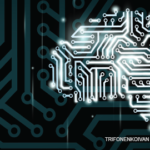Some intrepid researchers are starting to engage in this painstaking validation process. For certain purposes, such as predicting response to methotrexate in rheumatoid arthritis patients, AI has shown great promise.9 But when tasked with other high-stakes clinical decisions, such as predicting the diagnosis of ankylosing spondylitis, the results show a need for more refinement and validation.10
The precision of such technology will continue to advance, but what degree of imprecision will we be able to tolerate? After all,these are patients whose lives we are placing into the responsibility of computers with algorithms so convoluted their own programmers don’t know how they work.11 When a patient doesn’t quite fit into an algorithm, how will AI cope? And what are the legal and ethical ramifications of outsourcing our clinical decision making to a computer?12
These questions will need to be explored further as AI encroaches more and more upon the duties and tasks originally intended purely for humans.
The Robot Will See You Now
Even then, even if we reach the point that AI can reliably make clinical decisions, we will need to ponder the ramifications on our healthcare workforce. Per the ACR’s 2015 workforce assessment, there will be a deficit of more than 4,800 rheumatology providers by 2030.13 It is very well possible that sophisticated AI-based algorithms can help address this crisis.
Existing rheumatology clinicians may be better able to use AI to automate burdensome and tedious tasks so direct patient care can be prioritized. Similarly, AI can help to support diagnostic decision making to facilitate care so that greater numbers of patients can be seen promptly. At its most ambitious, AI may support primary care providers identify those at risk for diagnostic delays or undertreatment, obviating even the need for a rheumatologist.14
But we’ve heard these sorts of promises before, with electronic health records (EHRs). And although EHRs have been quite helpful, the burden of documentation and administrative work has been a major driver of burnout, a contributor in and of itself to the workforce crisis.15 If clinicians and patients are not in the driver’s seat in programming and implementing AI for real-world clinical settings, I anticipate more administrative tasks, clicks and overall waste, furthering our burnout. And this doesn’t even get into the very real potential of clinicians having to complete prior authorizations and peer-to-peer requests through an AI-powered insurance robot.16
The Joints Were Right
We need more humanism


